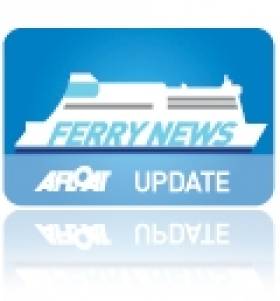Displaying items by tag: LD Ferries
First Ever Ferry Service from Ireland to Spain Announced
#ferry – Minister for Transport, Tourism & Sport Leo Varadkar has welcomed the second significant announcement of a new ferry route into Ireland in a matter of weeks, after LD Ferries confirmed a weekly service from western France and northern Spain.
The LD Ferries service will connect Rosslare with St Nazaire on the west coast of France, and with Gijón in northern Spain.
"This is a very welcome announcement and provides a valuable new landbridge from France and Spain into Ireland. It's the first service of its kind to Ireland, and it's great news for our tourism industry.
"This is the second positive announcement of a new ferry service in a matter of weeks. Last November a new route from Cherbourg to Dublin was announced.
"We are already well serviced in terms of air access, but this new route will help us to grow ferry tourism into Ireland. Driving holidays encourage visitors to spend longer in Ireland and to explore more of the country. It's very good news as we build on the success of The Gathering next year."
Port of Cork adds:
New Ferry Service from Cork to Santander Set to Increase Tourism and Freight in Munster
The Port of Cork Company today welcomed the announcement of a new route into Northern Spain from Cork which is due to commence at the end of April 2018. The service which will make two return sailings a week from Port of Cork to Port of Santander will be operated by Brittany Ferries and will include a weekly return sailing from Cork to Roscoff also.
A new RoPax ship called ‘Connemara’ will be chartered to serve the route which will add much needed capacity to Brittany Ferries existing line to France from Cork. The ship is currently operating on routes between Italy and Greece and will carry around 500 passengers with space for 195 cars. The Port of Cork and Brittany Ferries would expect a fifty-fifty split between passengers and freight carried.
Port of Cork’s Commercial Manager Captain Michael McCarthy said, “The Port of Cork wholeheartedly welcomes a service we have been trying as a port to establish for some time now. We are delighted that our long term customer, Brittany Ferries, has committed to this new service which will see an increase in tourism and freight. The option for freight carriers to bypass the UK land bridge will be seen as very attractive, as Brexit uncertainty continues. We have no doubt that both exporters and importers will make this a viable service.’
At present, there is a range of opinion about possible ‘hard’ and ‘soft’ UK Brexit scenarios, the timing and likely effects. For example, a ‘hard’ border (at ports and across Irish Sea) would mean Customs controls for ports serving the UK, increasing the need for this direct service between Ireland and Spain and an opportunity for Cork as a new ‘centre of gravity’.
The Port of Cork hinterland is the key primary agriculture and Food & Drink output region in the country. The vast majority of the goods imported and exported through Cork are consumables in the perishables arena such as wines, spirits, dairy, water and a wide range of other supermarket products. Freight customers will like this route because the Port of Cork can load and unload quickly thereby enabling customers to get their produce to market quicker, than if they travel through East Coast ports.
This new route to Northern Spain and France will greatly reduce the amount of road miles and therefore providing a lower cost door to door option for shippers. This will provide substantial carbon (CO2) cost saving that is becoming increasingly relevant to companies that are seeking to exhibit their ‘green’ credentials
The new service from Brittany Ferries is expected to be on sale by the end of January.
























































